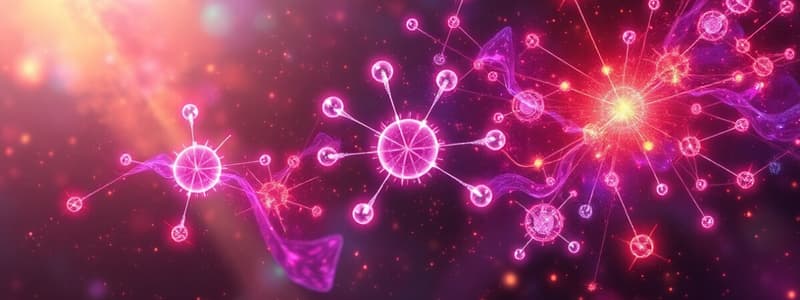Podcast
Questions and Answers
Which of the following groups has the strongest electron-withdrawing effect?
Which of the following groups has the strongest electron-withdrawing effect?
- Benzene
- NH3
- Cl
- NO2 (correct)
In the +1 series, which functional group has the weakest electron-donating ability?
In the +1 series, which functional group has the weakest electron-donating ability?
- 3°R (correct)
- 1°R
- -O
- -NH2
Which reagent is likely to have the least steric hindrance?
Which reagent is likely to have the least steric hindrance?
- -D
- -T
- -H
- -CH2 (correct)
Which series correctly lists the electron-donating ability from weakest to strongest?
Which series correctly lists the electron-donating ability from weakest to strongest?
Which of the following is correctly matched with its electron-withdrawing capability?
Which of the following is correctly matched with its electron-withdrawing capability?
Flashcards are hidden until you start studying
Study Notes
Series with Power
- Power series indicate the strength of electron-donating or electron-withdrawing abilities of substituents in organic compounds.
- The strongest electron-withdrawing group is NF3, followed by NR3, SR2, and NH3, descending to SO3H.
- The ability of groups to withdraw electrons also includes CN being the strongest, followed by COH, COOH, and halogens in order: F, Cl, and Br.
- Iodine (I) is a weaker electron-withdrawing group, which is superior to OR (alkoxy), OH (hydroxy), and C= (fourth level of substitution) and leading to NH2.
- Different structural functionalities like cyclohexane, benzene, and unsaturation (double bonds) influence the overall electron density.
Plus One Series
- The +1 series shows substituents in order of increasing basicity, starting with -CH2, followed by -NH2 and -O.
- Carboxylate ion (COO) ranks in the series as well.
- The ranking of alcohols and amines in substitution is based on the degree of substitution: tertiary (3°R) is more stable than secondary (2°R) and primary (1°R).
Relative Electron Affinity
- The hierarchy of relative electron affinity and stability: -T (tertiary) > -D (secondary) > -H (primary).
Chemical Species
- B2O3(OH): A compound with boron, oxygen, and hydroxyl functionalities.
- Na3P2O: Sodium phosphide, a compound involving sodium and phosphorus.
- C3O2: A carbon oxide compound with three carbon atoms and two oxygen atoms.
Transformation of 70
- The context of the transformation of a compound labeled '70' requires further detail for clarification.
Studying That Suits You
Use AI to generate personalized quizzes and flashcards to suit your learning preferences.




